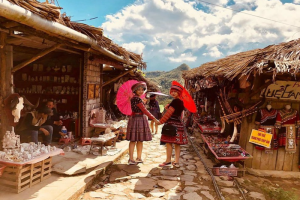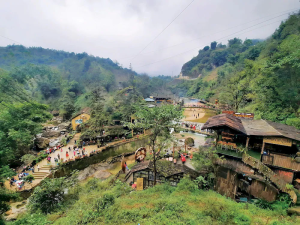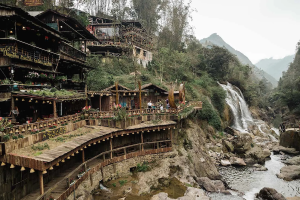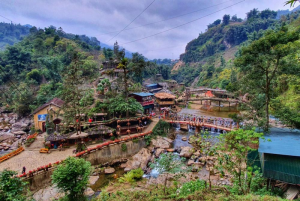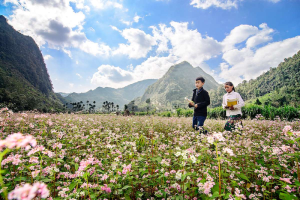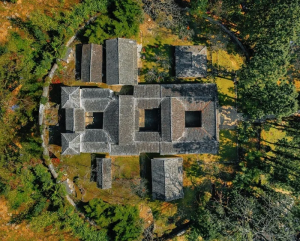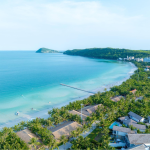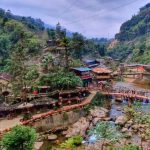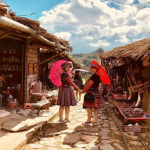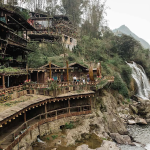Escape the ordinary and find serenity at Ba Vang Pagoda, Vietnam. Explore its architectural wonders, religious significance, and practical tips for an unforgettable journey, expertly curated by Lily’s Travel.
Introduction to Ba Vang Pagoda
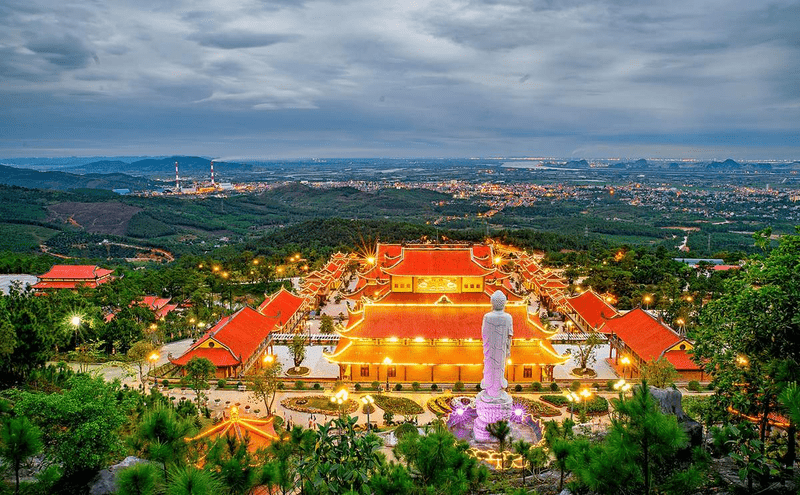
Tucked away amidst the emerald embrace of Quang Ninh Province’s mountains lies the captivating Ba Vang Pagoda Vietnam. This sacred site transcends the realm of a typical tourist destination. It beckons travelers seeking cultural immersion, a spiritual connection, and breathtaking landscapes.
Ba Vang Pagoda boasts a rich history that whispers of centuries past. Archaeological evidence hints at its possible existence in the 13th century, with concrete records confirming its construction in 1676 under King Le Du Tong’s reign. Over the years, the pagoda has undergone renovations and expansions, emerging as a crown jewel of Vietnamese Buddhism.
Main Attractions at Ba Vang Pagoda
Ba Vang Pagoda Vietnam offers a captivating tapestry of architectural wonders, each holding its own unique charm. Here’s a glimpse into some of the must-see attractions:
- Stone Gate: Your spiritual journey begins at the imposing Stone Gate, a symbolic entrance that demarcates the sacred grounds of Ba Vang Pagoda from the outside world. The intricate carvings and towering structure set the tone for the spiritual significance that awaits within.

- Tam Quan Trung & Tu Bi Waterfall: As you proceed, be mesmerized by the Tam Quan Trung, a three-door structure symbolizing the gateway to enlightenment. The gentle murmur of the nearby Tu Bi Waterfall adds a touch of serenity to the ambiance. Take a moment to appreciate the harmonious blend of nature and spirituality that Ba Vang Pagoda Vietnam embodies.
- Statues of Buddha: Venerated statues of Buddha, radiating peace and wisdom, grace various corners of the Ba Vang Pagoda complex. Seek out the most prominent statue, often housed in the main hall, to pay your respects and reflect on the Buddha’s teachings. Smaller statues nestled throughout the grounds offer quiet spots for personal contemplation.
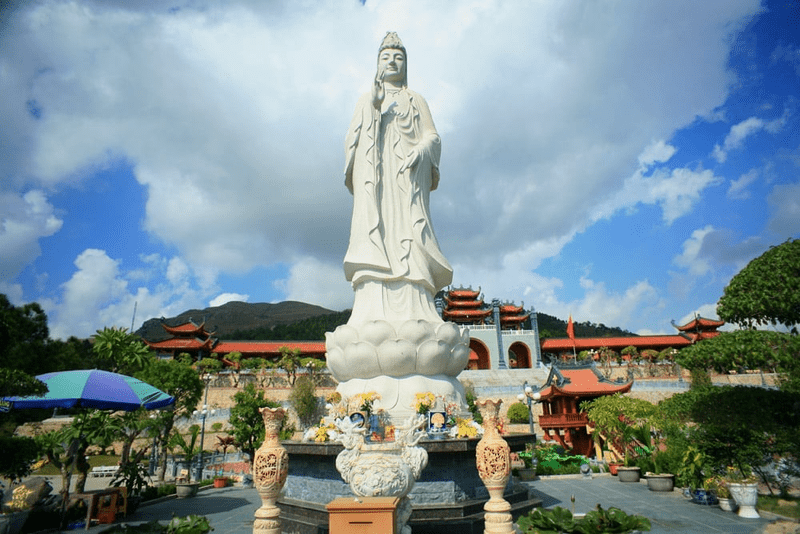
- One Pillar Pagoda and Ban Nguyet Lake: The unique one-pillar pagoda, reminiscent of a lotus flower, stands amidst the tranquil waters of Ban Nguyet Lake. It’s a sight that embodies the purity and serenity aspired to in Buddhist teachings. The lotus flower, a symbol of enlightenment, rising from the still waters of the lake creates a powerful visual metaphor for the spiritual journey, a concept deeply ingrained in the philosophy of Ba Vang Pagoda Vietnam.
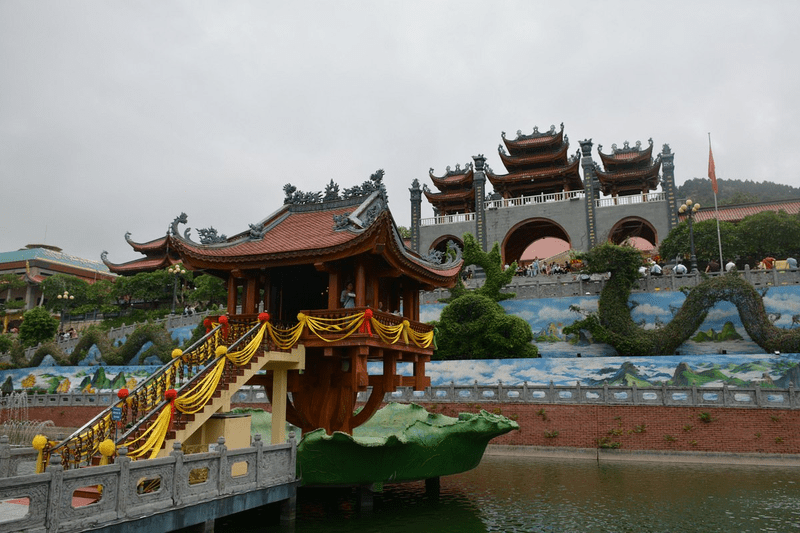
- Bo De Garden: Find respite in the serene Bo De Garden of Ba Vang Pagoda Vietnam, where the rustling leaves and the calming presence of the Bodhi tree (said to be the tree under which Buddha attained enlightenment) create a truly meditative atmosphere. Take a moment to wander through the garden, allowing the tranquility to wash over you.
- Tam Quan Noi: The inner sanctum, known as Tam Quan Noi, houses the main hall of Ba Vang Pagoda Vietnam, adorned with intricate carvings and devotional statues. Here, witness Buddhist monks engaged in prayer and meditation. Observe their practices with respect, and appreciate the dedication they bring to their faith.
- Godly Well: Legend imbues the Godly Well of Ba Vang Pagoda with mystical properties. Many visitors partake in the ritual of cleansing their hands and faces with its water, seeking blessings and good fortune. While the scientific validity of the claims may be debatable, the well serves as a reminder of the importance of purification in Buddhist beliefs.
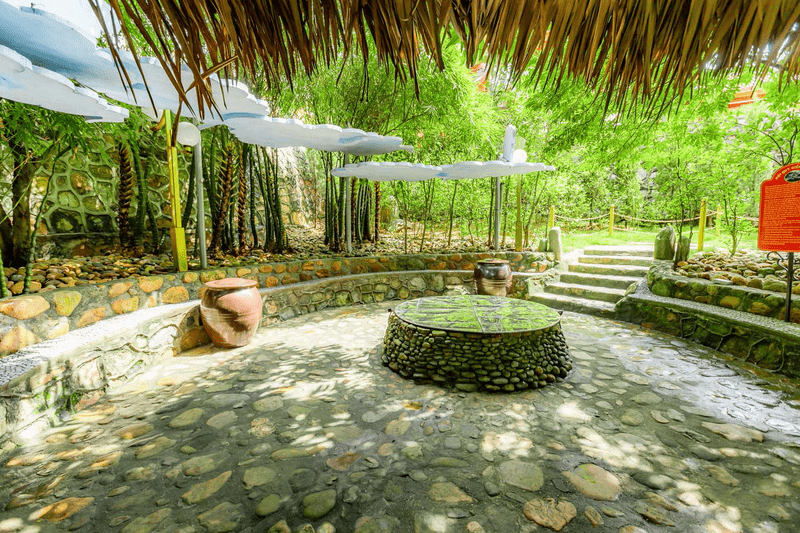
Readmore: Hanoi to Halong Bay: All information for your travels
Religious and Cultural Significance
Ba Vang Pagoda Vietnam is a pivotal center of Mahayana Buddhism in Vietnam. It serves as a place of worship, learning, and spiritual practice for both monks and devotees. The pagoda embodies the core tenets of Buddhism, fostering compassion, mindfulness, and the pursuit of enlightenment. Witnessing monks engaged in their rituals and devotees offering prayers allows you to gain a deeper understanding of these core principles that are central to the experience of visiting Ba Vang Pagoda.
Beyond its religious significance, Ba Vang Pagoda Vietnam is also a cornerstone of Vietnamese culture. The architectural styles and art forms employed within the complex reflect the rich artistic heritage of the region. The pagoda’s very existence speaks to the deep-rooted Buddhist traditions in Vietnam. Observe the intricate carvings, murals, and sculptures to appreciate the artistic mastery poured into the construction of Ba Vang Pagoda. Visiting the pagoda allows you to gain a deeper understanding of Vietnamese traditions and beliefs, creating a connection that transcends religious boundaries.
Visiting Ba Vang Pagoda
Planning your visit to Ba Vang Pagoda Vietnam can ensure a smooth and enriching experience. Here are some key considerations, along with expert advice from Lily’s Travel:
Best Time to Visit
The pagoda welcomes visitors year-round. However, the dry season from October to April offers pleasant weather for exploring the outdoors, particularly if you plan to hike up the mountain to Ba Vang Pagoda Vietnam. If you prefer cooler temperatures, consider visiting during the shoulder months of September or May. Keep in mind that Vietnamese weather patterns can be unpredictable, so be sure to pack an umbrella or raincoat regardless of the season.
Visitor Guidelines and Etiquette
As a place of worship, Ba Vang Pagoda expects visitors to adhere to certain etiquettes. The first time I visited, I was struck by a sense of awe washing over me as I approached the imposing Stone Gate. Respectful attire is a must, so I donned clothing that covered my shoulders and knees. Once inside the temples and halls of Ba Vang Pagoda Vietnam, I followed the lead of others and removed my shoes before entering. Maintaining a hushed tone seemed natural; the gentle murmur of prayers and the soft chanting of monks created a peaceful ambiance I didn’t want to disrupt. While capturing photos of the pagoda’s beauty was tempting, I made sure to be mindful of not photographing monks in prayer without their consent. A small donation felt like a way to show my appreciation for the upkeep of this magnificent pagoda.
Nearby Accommodation and Dining
A range of accommodation options cater to various budgets near Ba Vang Pagoda. I debated between experiencing local life in a homestay and indulging in the luxurious amenities of a resort. Ultimately, the decision depends on your travel style and budget. Uong Bi City boasts a vibrant culinary scene, so no matter your cravings, you’re sure to find something delicious. I savored traditional Vietnamese pho for lunch, but there were options ranging from international cuisine to fresh seafood, a delightful way to experience the local flavors after exploring Ba Vang Pagoda Vietnam.
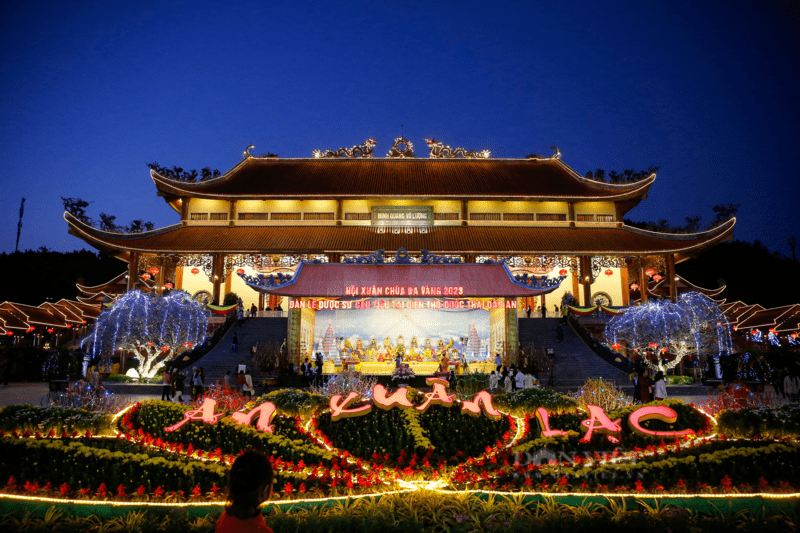
How to Get to Ba Vang Pagoda
Ba Vang Pagoda is conveniently located near Uong Bi City, Quang Ninh Province. Here are the different ways to reach the pagoda:
- By Car or Taxi: Coming from Ho Chi Minh City, flying to Hanoi or Haiphong first might be easier. From there, you can hail a taxi or rent a car to reach Uong Bi City. The pagoda is roughly a 15-minute drive from the city center, so you can enjoy the scenery along the way on your trip to Ba Vang Pagoda Vietnam.
- By Bus: Public buses connect Uong Bi City with Hanoi and Haiphong. Once in Uong Bi, you can take a taxi or motorbike taxi (xe om) to reach the pagoda. This option is budget-friendly, but be prepared for a bit more travel time compared to a taxi, especially during peak season for Ba Vang Pagoda.
Ba Vang Pagoda Vietnam promises an unforgettable experience. With its captivating architecture, rich history, and spiritual significance, it’s a place that will stay with you long after your visit. By following these guidelines from Lily’s Travel and planning your visit effectively, you can ensure a respectful and enriching encounter with this Vietnamese treasure.
Read more: 6 reasons make Halong become one of the best tourist city in Vietnam





